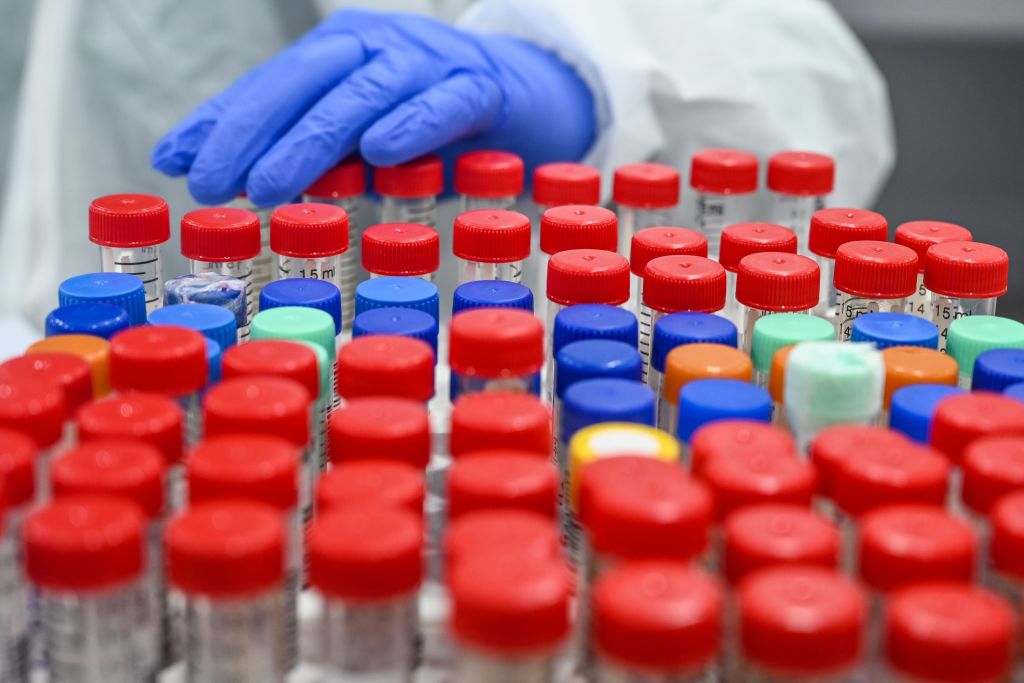Coronavirus: constantly surprising virus found to be heat tolerant, self-healing and very resilient in lab tests
- Hungarian team finds virus particle withstands being probed by a nano needle 100 times, possibly making it the most physically elastic virus known
- French scientists find it can replicate in animal cells after being exposed to temperatures of 60 degrees Celsius for an hour
Coronavirus: constantly surprising virus found to be heat tolerant, self-healing and very resilient in lab tests
- Hungarian team finds virus particle withstands being probed by a nano needle 100 times, possibly making it the most physically elastic virus known
- French scientists find it can replicate in animal cells after being exposed to temperatures of 60 degrees Celsius for an hour
A research team in Hungary pinched the
coronavirus
with a fine needle to measure how much force it could take before popping like a balloon.
It did not.
The native virion of Sars-CoV-2 – a complete virus particle – was only about 80 nanometres wide, and the needle tip was much smaller than that. The tip drove from the top of the virus to the bottom. The virion was squashed, then immediately rebounded as the needle left.
The researchers repeated the drill 100 times and the same viral particle remained almost intact.
It is "surprisingly resilient," said the team led by Dr Miklos Kellermayer of Semmelweis University in Budapest in a non-peer-reviewed paper posted on biorxiv.org Thursday.
Scientists from the Semmelweis University in Budapest pinched the coronavirus with nano needle. Credit: Dr Miklos Kellermayer
The new coronavirus has constantly surprised scientists with its unique structure. For instance, a team from Tsinghua University in Beijing released the most detailed structural reconstruction of the virus in the journal
Cell this week with the discovery that the virus could pile a large amount of nucleic acid ribbon that carries genetic data into a very tight envelope without becoming tangled with each other.
Advertisement
However, the virus used in this and other previous studies was frozen to obtain a sharp, stable shot for the camera.
Coronavirus science latest: vaccines, treatments, reinfection and research
21 May 2020
Kellermayer's team captured how the virus behaved when it was alive. They put the viral particles on a tray coated with a biological binding material.
EVERY OTHER SATURDAY
SCMP Global Impact Newsletter
By submitting, you consent to receiving marketing emails from SCMP. If you don't want these, tick here
The material could fix the virus in position. Under a laser-emitting atomic force microscope, the scientists played around with the virus with a needle to see how it responded to various stimuli.
A virus usually becomes vulnerable after leaving the host. But, according to some studies, Sars-CoV-2 could stay on some everyday surfaces such as cupboards for several days.
How it managed to survive environmental disturbances remained unclear.
Chinese researchers to test double doses of CanSino's coronavirus vaccine candidate
Read more
'Artificial coronavirus' study linked to Bannon and Chinese fugitive
Read more
Scientists find pandemic-flu collision doubles Covid-19 transmission
Read more
Headaches and delirium: coronavirus can invade brain, study says
Read more
Coronavirus immunity short-lived if you had mild or no symptoms: study
The Hungarian team found the viral envelope barely gave any resistance as the needle tip landed on the surface. As the tip went further, the resisting force peaked and then quickly diminished to almost non-existent.
Their experimental data suggested Sars-Cov-2 could be the most physically elastic virus ever known to humans so far, and repeated deformation did not seem to affect the overall structure and the content inside the virus, either.
"Its mechanical and self-healing properties may ensure adaptation to a wide range of environmental circumstances," said Kellermayer and colleagues.
Covid-19: our explanatory graphics collection
Chinese scientists estimated that Sars-CoV-2 had on its surface 26
spike proteins
that could bind with a host cell. Researchers at Cambridge University in Britain gave a similar estimate of 24. A study by researchers in the Max Planck Institute in Germany came up with a count of 40.
Kellermayer said there were 61 spikes on their specimen. This suggested the variability of the viral structure could be greater than thought, they said.
They poked the spike proteins with the needle and found they were swinging rapidly at high frequency. The atomic camera could take more than 300 shots in a second but still only got a motion-blurred image of the spikes.
Such high speed movements could help the virus more easily find and hook on to a host cell, according to the researchers.
A study by French scientists in April
found that the virus could replicate in animal cells after being exposed to a temperature of 60 degrees Celsius for an hour. The massive outbreaks in some countries over the northern hemisphere summer also suggested that high temperature did not slow the spread of the pandemic as previously hoped.
Kellermayer and his colleagues heated the viral particle to 90 degrees for 10 minutes and found that "remarkably, their global appearance was only slightly altered".
Some spikes had come off under the scorching heat, but the overall structure remained intact.
"The Sars-CoV-2 virion displays an unexpected global thermal stability, which is likely related to their aerosol and surface stabilities," they said.
https://www.scmp.com/topics/coronavirus-china










